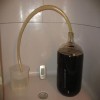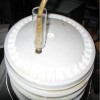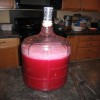How to Make an Airlock
In order to save beer, mead or wine from oxygen, the Airlock has become quite essential for any person who brews at home. Keep into mind that yeast converts sugars into alcohol and also into carbon dioxide. You need to let carbon dioxide escape otherwise it will create intense pressure and will cause breakage of wine or beer vessels.
Oxygen should also be kept away from brew and an airlock plays the central role in this regard. An airlock is basically a gas-tight valve which is positioned one side of the vessel and it is designed in a way to let the carbon dioxide out. However, it stops oxygen from entering into the vessel.
However, making an airlock at home is a bit tricky but you can make it with a considerable easy. There are two methods, Blow off Tube Technique and Balloon Technique, to make an airlock and by following any of these two methods, you can make an airlock without facing any trouble.
Things Required:
– Water
– Drill bit slightly smaller than clear tubing
– Straight pin
– Rubber stopper to fit fermentation vessel
– Clear flexible tubing (longer than fermentation vessel)
– Balloon
– Fermentation vessel (bottle or carboy)
– Drinking glass or pitcher
– Drill
Instructions
-
1
Blow off Tube Technique:
First of all, you need to take a drill machine and drill a hole in rubber stopper. Make sure it is smaller than the overall diameter of tubing. After that, insert the tubing into the rubber stopper and also make sure an inch of the tubing protrudes are into fermentation vessel or pot.
Image courtesy: community.mrbeer.com
-
2
Now put the rubber stopper and tubing assembly in the vessel. You need to check that tube should end in air space and if it is not, then pull and adjust it accordingly. Then take the water and fill it into a glass (half way). Now put the other end of tubing into the glass.
Image courtesy: homebrewtalk.com
-
3
Balloon Technique:
Take a balloon and make a hole in its bottom by using a straight pin. After that, stretch this balloon exactly over the neck of the fermentation pot or vessel.
Image courtesy: shonari.net
-
4
As soon as the fermentation starts, you will see that CO2 will inflate the balloon. However, the hole in the bottom of the balloon will prevent the growth of pressure. The airlock is complete now and the oxygen does not have access into the vessel while carbon dioxide will escape easily.
Image courtesy: weaponsgradecode.com







